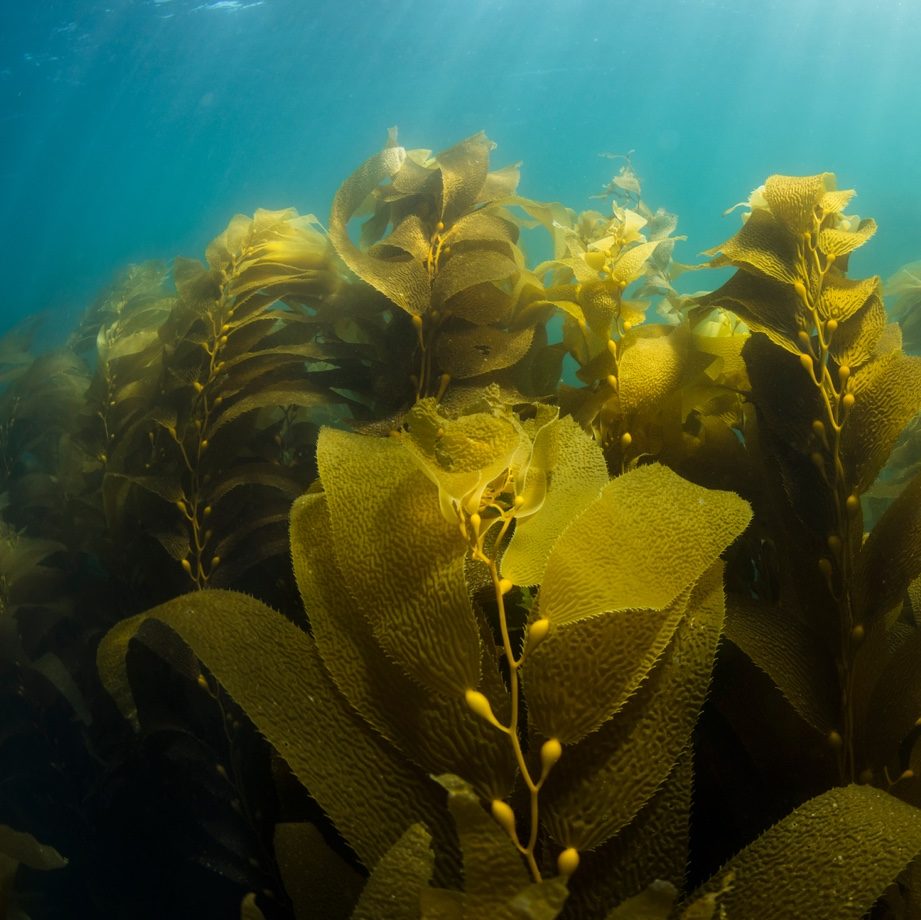Kelp forests sequester five times more carbon than land-based forests. But climate change, and resulting ocean warming and acidification, are making it harder for these diverse ecosystems to survive.
Words to live by: Don’t discount the organisms at the bottom of the food chain. Specifically, kelp forests. Kelp refers to the type of brown algae seaweed that grows in the ocean and is found on coasts all over the world. There are a handful of different species of kelp — giant kelp, bull kelp, sugar kelp, among others — but they all have one thing in common: they comprise one of the most vital and diverse ecosystems in the ocean. The underwater habitat is home to hundreds, sometimes even thousands of species. Think invertebrates like snails, sea stars, squid, oysters, and jellyfish, and sea urchins, fish, even other algae. Sea otters get their food from kelp forests, and others, like sea lions and seals, use them to hide from large predators, while some species of sharks hunt along the dense rows.
“It houses 800 species of organisms — it’s like the condos of the ocean.”
“The kelp forest habitat here in Southern California is the most important coastal habitat we have,” says Captain Nancy L. Caruso, a marine biologist and founder of Get Inspired, a nonprofit focused on community-based restoration of the local kelp forest ecosystem. “It houses 800 species of organisms — it’s like the condos of the ocean.”
Humans have also long relied on kelp forests for food, fertilizers, medicinal uses, and other innovations. Both our early ancestors and the Wabanaki people, who have lived in the eastern coastal region of Maine for thousands of years and include the Mi’kmaq, Maliseet, Passamaquoddy, Penobscot, and Abenaki nations, harvested kelp as an important source of iodine, sodium, potassium, and greens. During the 1600s, European colonizers used dried seaweed kelp in antibiotics, insecticides, and anticoagulants. And in WWI, it was used to make potash for ammunition. Today, we still rely on seaweed harvested from kelp forests for fertilizers, seasonings, snacks, toothpaste, and more. “Seaweeds also provide oxygen to the ocean and marine life as well as help to restore ecosystems, provide food security, and are great tools against storm surges as they protect large waves from reaching shore,” says Morgan-Lee Fogg, founder of Nautical Farms, a regenerative kelp farming company in Maine. They’re also incredible carbon sequesters.
Unfortunately, a combination of human actions, including ocean warming and acidification caused by climate change, is killing off these essential ecosystems. Scientists have reported a 95 percent decline in Northern California and Tasmania, Australia, areas known for their lush, coastal kelp ecosystems.

Read more: 10 Ways to Help Save Our Oceans
Kelp forests naturally go through periods of waxing and waning. They thrive in cool, clean water, so depending on weather conditions and the populations of other species, they disappear and reappear over the years. However, we’re now seeing the complete collapse of entire kelp forest ecosystems — and they’re extremely difficult to restore once they’re gone.
In Orange County, California, where Caruso lives and focuses her restoration efforts, it took her 10 years, 350 volunteers, and the help of 5,000 kids from local school programs to restore the area kelp forests that had vanished for 22 years. From what Caruso can piece together, multiple factors contributed to its collapse. In the 1800s, humans killed off the last sea otter in the area, which led to an overpopulation of sea urchins that can quickly graze down kelp forests. Development of Southern California paved over large swaths of land with concrete and asphalt, meaning rainwater that would typically be absorbed by soil instead made its way to the ocean, bringing sediment with it. The result was cloudier oceans and thus, less sunlight for kelp that rely on it for growth. The nail in the coffin was a warm water El Niño storm in 1983 followed by a severe 200-year storm in 1988 that ripped out what little remained of the kelp forest.
“Ecosystems are extremely resilient, so it’s never just one thing that causes a collapse, and that was truly a collapse. It wasn’t the normal waxing and waning process,” says Caruso. In Monterey, California, an area known for its kelp forests, the ecosystem has lost about 75 percent of its kelp, according to Caruso. “We don’t really know yet what is contributing to the degradation. This just happened after the warm water blob and then an El Niño. The otters are still around, but the degradation happened very quickly.”
Scientists like Caruso and a burgeoning regenerative kelp farming industry are working to revive native kelp forests. And harvesters hope their efforts will simultaneously help combat climate change while supporting their local economies.
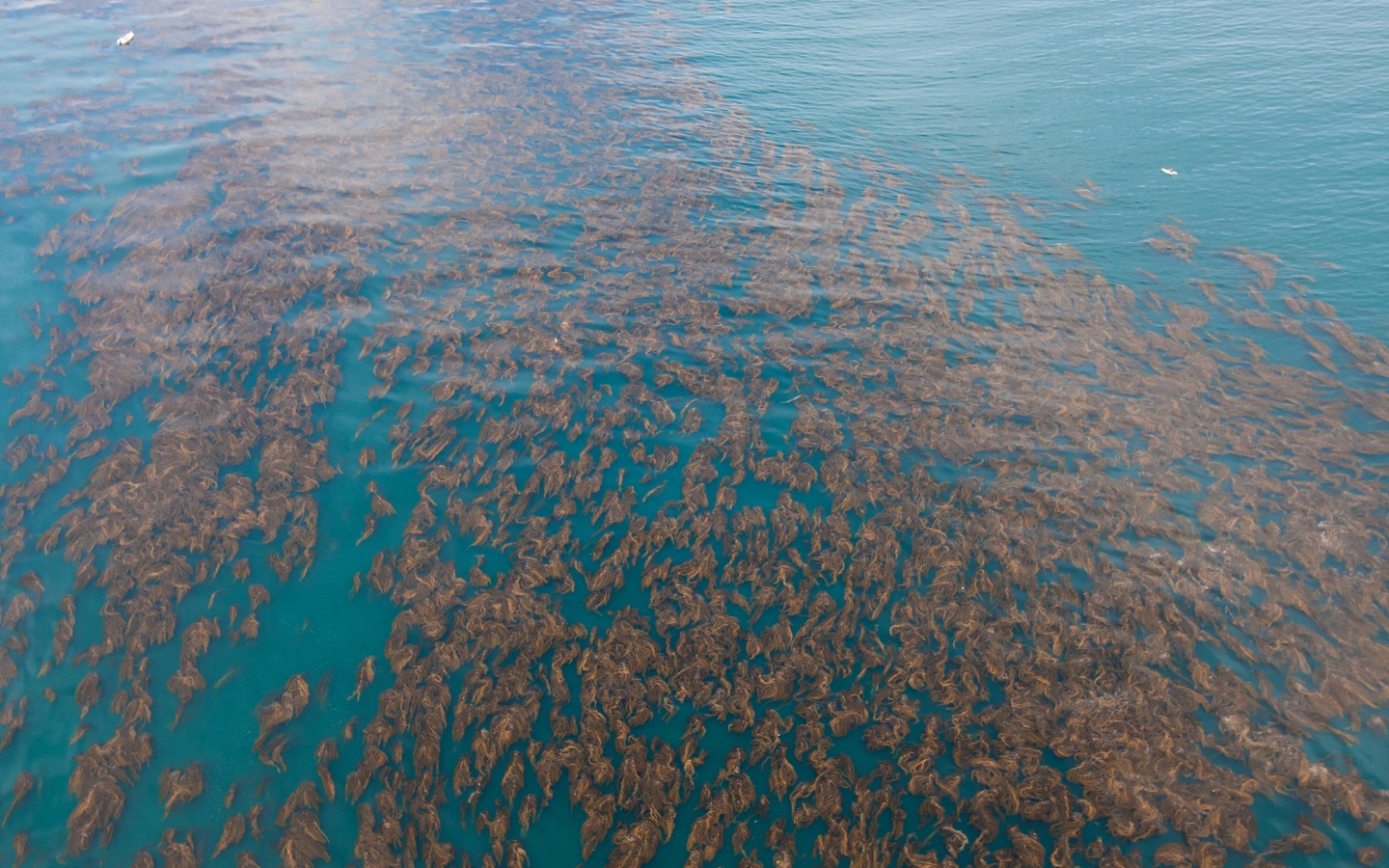
Read more: Why Regenerative Agriculture Produces Healthier Soil and Farms
In optimal conditions, kelp forests can cover vast expanses of ocean coastline, with species such as giant kelp growing as tall as 150 feet underwater. It’s this biomass that makes kelp forests amazing carbon sequestrators, capable of absorbing carbon at 20 times more per acre than land forests. But to ensure the carbon and nitrogen kelp forests absorb doesn’t end up back in the ocean, it must be harvested.
“When you begin to look at how much time we have before the damage of climate change becomes irreversible, versus what our realistic available options are as far as solutions, you realize that super aggressive carbon capture activities like kelp and seaweed farming are urgently needed if we are going to succeed in saving this planet,” says Sean Barrett, co-founder of Montauk Seaweed Supply Co., a regenerative kelp farming company in Long Island that sells sustainably harvested fertilizer made from seaweed. “Environmental engineering solutions that are scientifically proven to capture carbon, sequester nitrogen, improve soil health, perform phytoremediation of waterways, and create jobs should be pursued vigorously. Kelp and seaweed farming checks every one of those boxes.”
By turning the kelp harvested from their seaweed farms into healthy fertilizer, Montauk Seaweed’s closed-loop method not only extracts nitrogen, carbon, and phosphorus from waters surrounding Long Island, it also returns those elements back to the soil.
“Waves of coastal development and overpopulation have forced elevated levels of nitrogen into local bays and estuaries,” says Barrett. “This ‘nitrogen loading’ epidemic has been amplified dramatically by the impacts of imported synthetic fertilizers used for landscaping, lawns, golf courses, and some forms of agriculture.”
This, combined with warmer and more acidic oceans, has resulted in a 95 percent decline in clams over the past 25 years and catastrophic die-off events of bay scallops, according to Barrett. Kelp forests are the solution. Barrett and his crew are building kelp “halos” around their oyster farms. The kelp grows around the perimeter of the farm and lowers the acidity level of the water inside the halo, so the oysters inside can grow and flourish.
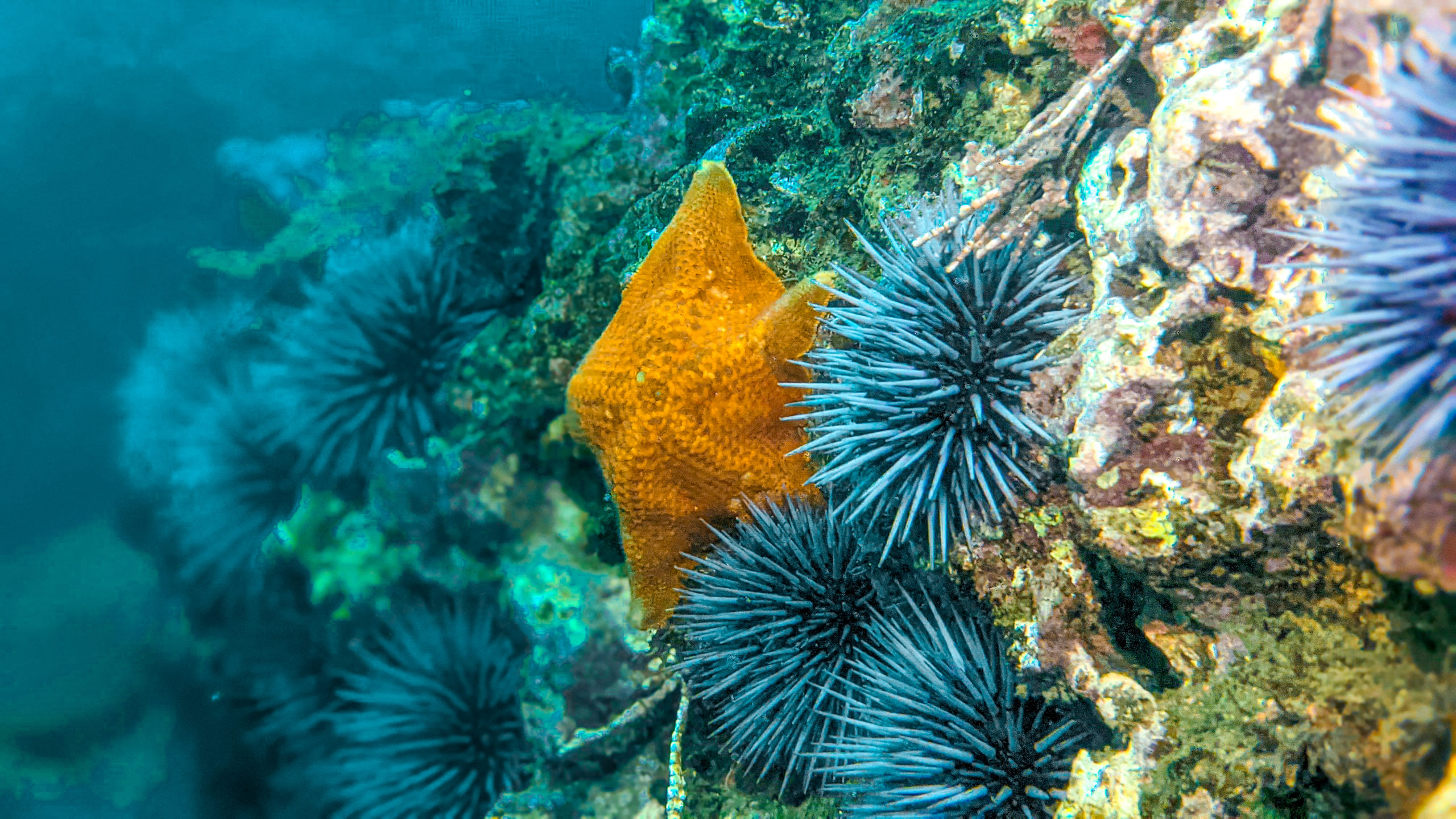
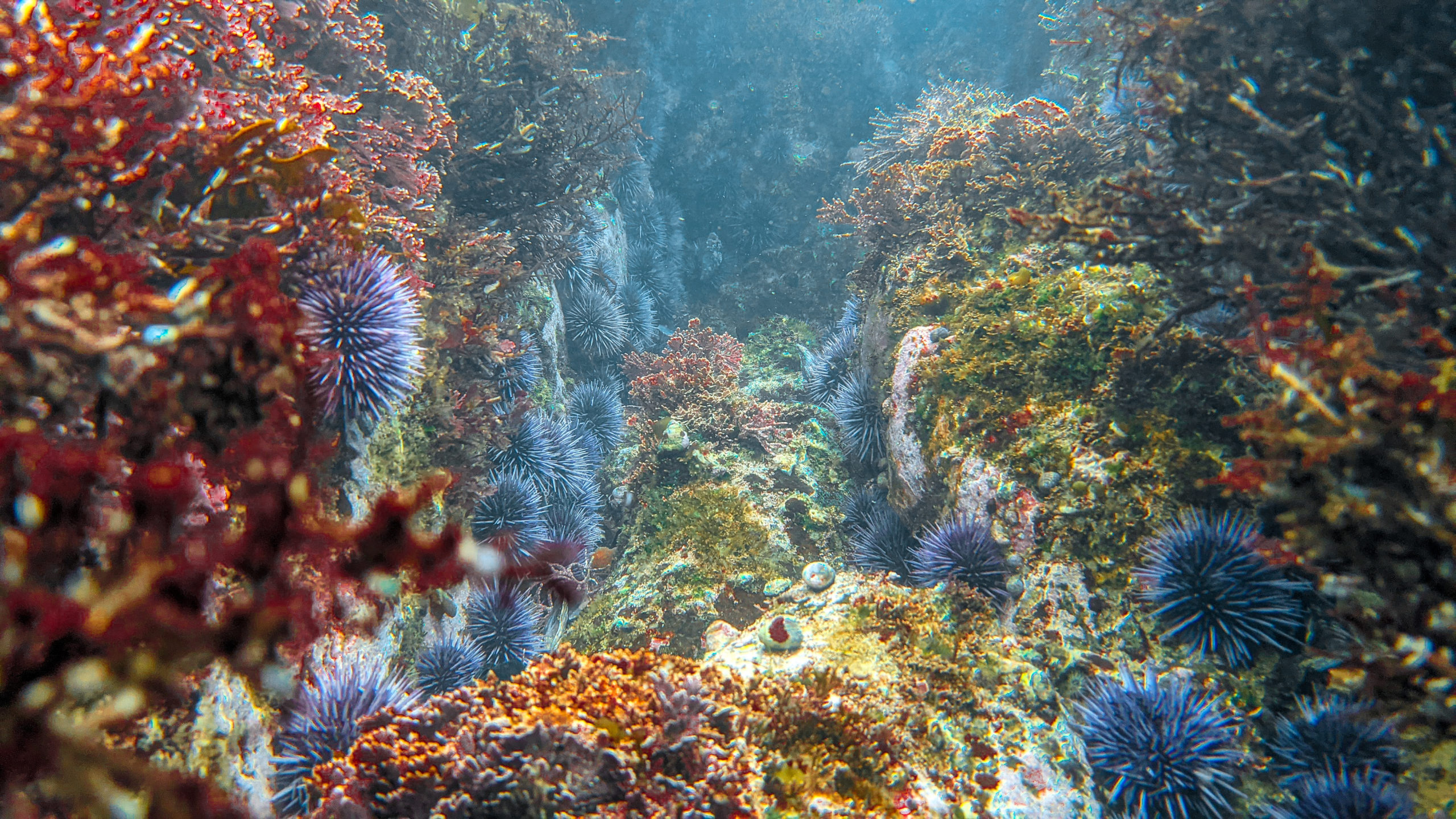
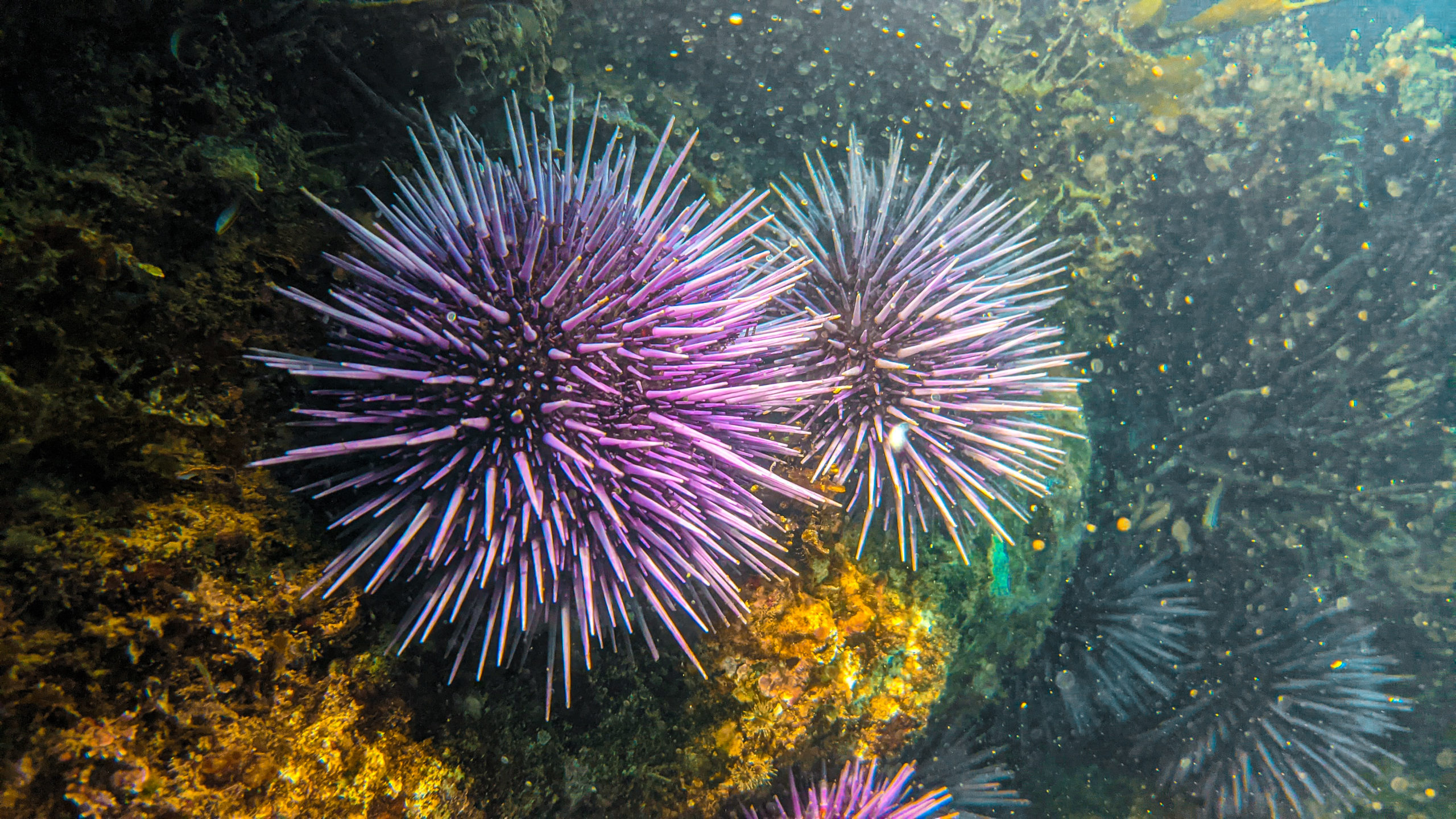
Read more: What You Need to Know About Carbon Capture
Meanwhile, in Maine, Nautical Farms — which uses its harvested kelp to make seaweed snacks, bath soaks, and scrubs — has installed a polyculture crop production system that takes up less space and enables them to grow multiple crops simultaneously or in rotation. The system also provides better nutrient utilization as multiple species are growing alongside each other, increasing biodiversity. “We still have so much work to do, but we’ve already been able to create job opportunities, which was a big goal of ours when we got started,” says Fogg. “I think we’ve also inspired others who live and work on the ocean to think about seaweed differently.”
“Everybody needs to take a role in the process and have a stake in the health of the continued healthy ecosystem. If it’s not being taken care of, voice your opinion and get regulations and laws changed. Scream louder, and demand change. The only thing that moves the needle is public outcry.”
But getting the go-ahead to begin these types of projects can mean cutting through a lot of red tape. For Caruso’s part, she had to obtain a handful of different permits — from the Army Corp of Engineers, the U.S. Navy, local agencies, the regional water quality control district, state parks, and the Department of Fish and Wildlife — to plant her kelp. Then, she had to lease the land where she was planting from the State of California.
“People don’t understand what it takes, they just think there are people taking care of it, and it’s not true,” says Caruso. “Everybody needs to take a role in the process and have a stake in the health of the continued healthy ecosystem. If it’s not being taken care of, voice your opinion and get regulations and laws changed. Scream louder, and demand change. The only thing that moves the needle is public outcry.”
Have feedback on our story? Email us at [email protected] to tell us what you think!

Shop Pillows
The Essential Organic Pillow Collection
Gentle, breathable, non-toxic support.




